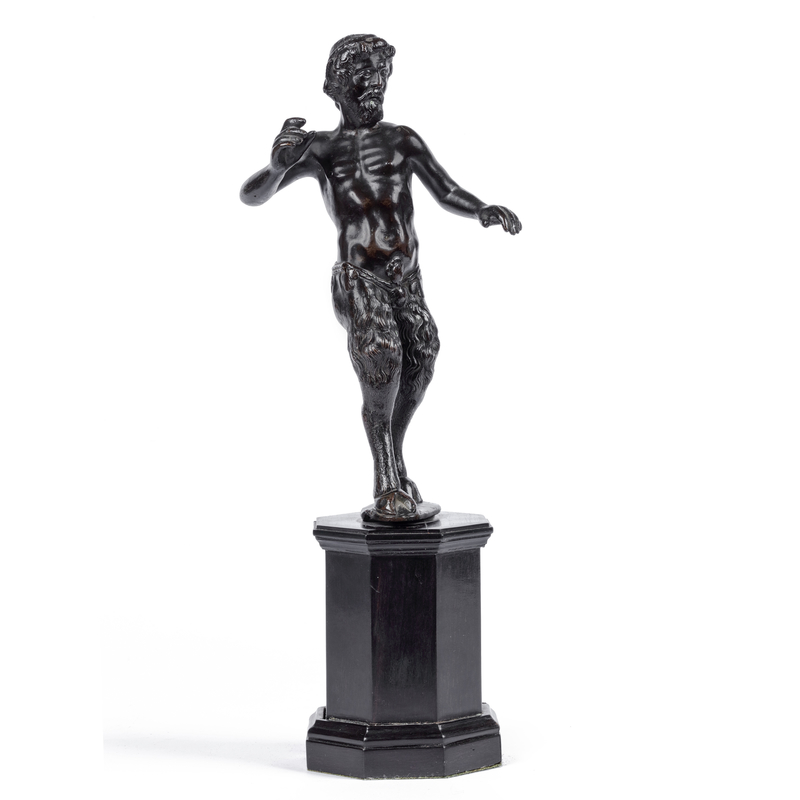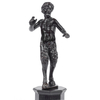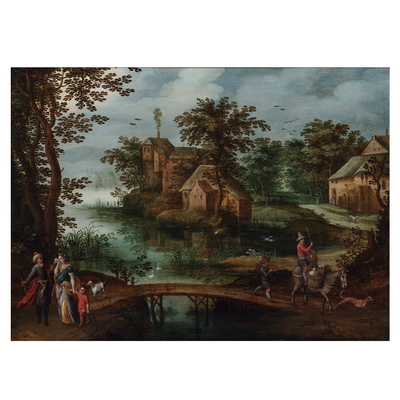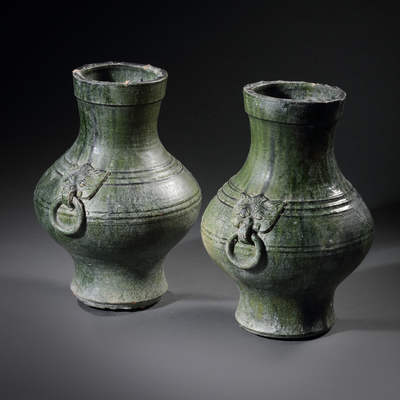Sculpture of a faun
Global shipping available
- Origin
- Central Italy
- Period
- 1600-1650
- Material
- bronze
- Height
- 37 cm
- Width
- 15 cm
- Literature
A. Radcliffe, M. Baker & M. Maek-Gérard, Renaissance and later sculpture - The Thyssen-Bornemisza Collection, Londen 1992, pp. 162 - 165.
Rijksmuseum Amsterdam, Meesters van het borns der Italiaanse Renaissance, Amsterdam 1961, cat. 72.
Questions about this object?
Please use one of the contact options below:
Description
This bronze faun with his characteristic goat-like legs was made in central Italy in the first half of the 17th century. The faun stands slightly backwards and reaches forward with his left hand. His right arm is bent and both his hands are remarkably large. He has cloven hooves and hairy legs, with rich fur on his thighs. His upper body is that of a man, except for the horns on his head. Around his waist, he wears a belt with several leaves on it, which emphasizes his mythological origin as a forest creature. In his curly hair, he also wears a band with leaves. He has a bucktail and his ithyphallus is covered with a leaf. He has two small horns, long and pointed ears and a split beard, typical features of a faun. The figure stands on a later added octagonal profiled base. The composition of the cast bronze points to Rome, in the period 1600-1650. Small bronze sculptures like this one, inspired by the myths and sagas of classical antiquity, found their way into studios and collections during the Renaissance. Developments in bronze casting techniques made it possible to use moulds several times and to reproduce earlier sculptures.
The faun is a creature of Roman mythology and closely related, and often confused, with the Greek satyr. Both mythological figures are half-animal and half-human, but have different origins: fauns are Roman forest gods depicted as half-man and half-goat, satyrs are half-man and half-horse, belonging to the entourage of the Greek god Dionysus and are related to the god Pan. Whereas the satyr was said to have a lazy, drunken and lustful nature, the faun was seen as an innocent forest god. Over time, these two personifications melted together, partly due to the takeover of Greek culture by the Romans, and the faun or satyr was almost always depicted with buck's legs and horns and a rogue personality with a preference for wine.
Often, fauns or satyrs are depicted dancing or making music. The best-known and most reproduced faun, the Dancing Faun of Pompeii (Museo Archeologico Nazionale di Napoli), is depicted in a dancing pose. In addition, many fauns or satyrs hold a musical instrument. Often these are two cymbals or a pan flute, emphasising their relationship with the god Pan. In the light of other faun figures, the particular pose of this faun, with his arms bent and his body leaning backwards, can be interpreted as dancing. It is also possible that he was originally part of a larger group of bronze figures. Besides being depicted as dancing, playing music and drunk, satyrs and fauns are sometimes shown sleeping or lazing, like for instance the Barberini Faun (Glypotek München).








